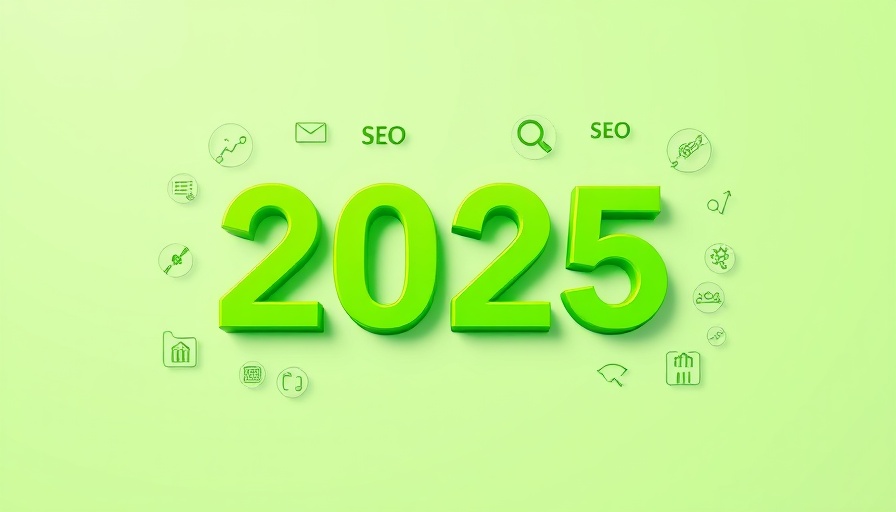
Why Local SEO Is Essential for 2025
In today’s digital landscape, local SEO has become a critical factor for small and medium-sized businesses (SMBs) aiming to increase their visibility. As entire industries continue to forge ahead into a more online-based approach, understanding local search dynamics is essential for any business looking to survive and thrive. Experts predict that by 2025, the significance of local searches will grow exponentially, driving businesses to invest in their local SEO strategies.
Statistics That Illuminate Local Search Intent
According to recent surveys, a staggering 46% of online search queries have local intent. This statistic underscores the vital importance of effectively targeting your local audience. Moreover, as per the Consumer Search Behavior Index, 80% of US consumers search for local businesses weekly. For marketing managers and entrepreneurs in industries such as retail, hospitality, and services, understanding these behaviors is crucial.
Impact of Online Reviews on Local Businesses
Online reviews have emerged as a potent tool for influencing consumer decisions. Research indicates that 83% of consumers rely on Google to find local business reviews, while platforms like Instagram and TikTok are also gaining attention, with 31% and 20% of users, respectively, using these platforms for review comparisons. This trend highlights the need for businesses to prioritize their online reputation and engage with customers across multiple channels.
Changing Consumer Behavior in Local Searches
The way consumers research local businesses is evolving. By 2023, two-thirds of US consumers had already made a buying decision before stepping into a physical store. It’s crucial for SMBs to ensure that the information provided online—such as business hours and product availability—is accurate. Incorrect information could lead to losing potential customers, with 62% of consumers likely to avoid businesses with online discrepancies.
The Role of Google My Business in Local Visibility
Optimizing Google My Business (GMB) is one of the most straightforward yet effective local SEO strategies for 2025. GMB allows businesses to manage their online presence on Google, helping improve visibility in local searches. Key elements for optimization include uploading high-quality images, updating business hours, responding to customer reviews, and providing accurate business information. In practice, businesses that take these steps can see a significant uptick in both website traffic and footfalls.
Local SEO Tools to Drive Success
Many tools can assist SMBs in carving out their local presence in the digital realm. Tools like Moz Local, SEMrush, and Ahrefs provide deep insights into local keyword performance and visibility metrics. Employing these tools can help businesses track their standings compared to local competitors, identify opportunities for improvement, and enhance overall local search visibility.
Building Local Citations for Better Rankings
Local citation building is another critical aspect of local SEO that cannot be overlooked. Consistency in NAP—Name, Address, Phone Number—across various online directories boosts your chances of ranking higher in local searches. Businesses should aim to list their information on relevant directories while ensuring accuracy and consistency across the board.
Case Studies: Successful Local SEO Strategies
Examining successful local SEO case studies offers valuable insights into what works. One notable case is that of a small bakery that enhanced its online visibility through diligent GMB optimization and engagement on social media. By actively encouraging satisfied customers to leave reviews, they saw a 30% increase in foot traffic within just six months.
Future-Proof Your Business with Local SEO
By 2025, the landscape of local SEO will likely continue to evolve. For SMBs, investing in local business marketing strategies now can lead to sustained growth and success in the competitive marketplace. Understanding local search ranking factors, leveraging local SEO tools, and maintaining an active online presence will be essential for staying ahead of the curve.
To ensure you’re setting your business up for future success, adopt local SEO tips that resonate with your audience. Stay ahead of the trends, and make the necessary adjustments to your marketing strategies now.
 Add Row
Add Row  Add
Add 




Write A Comment